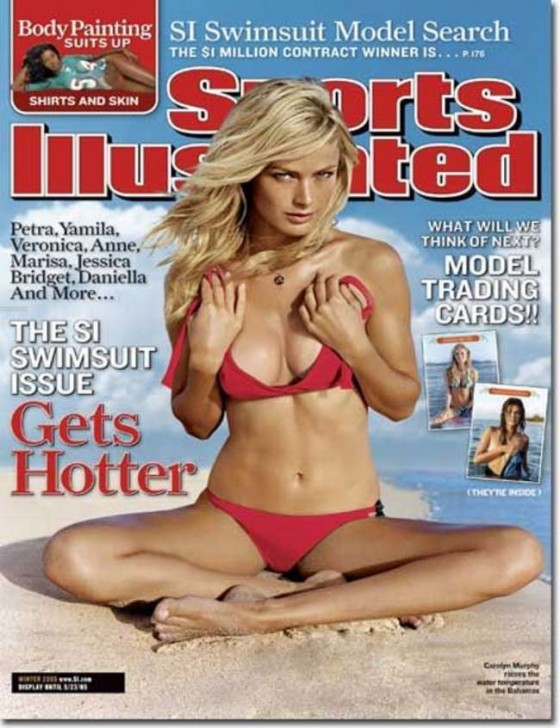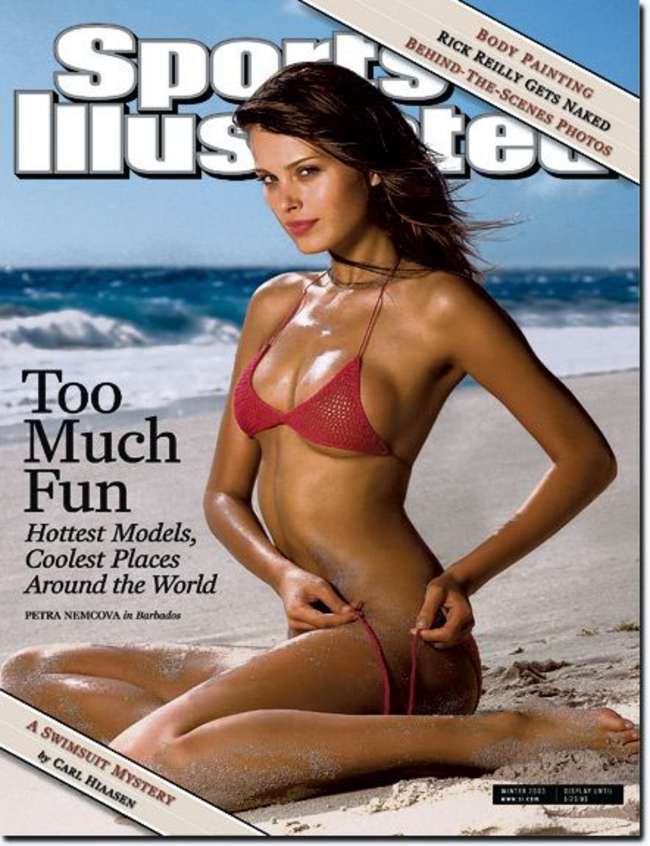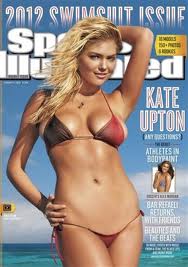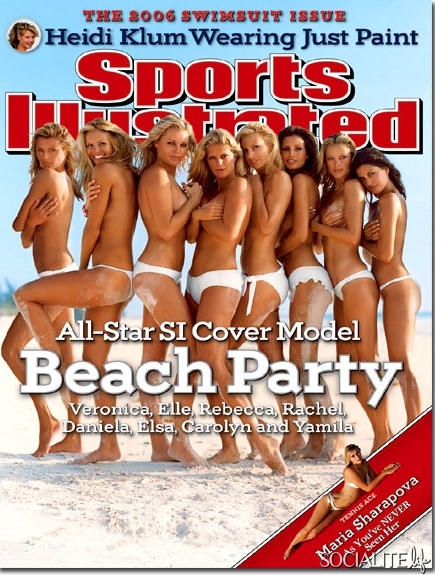



After examining the cover photographs of Sports Illustrated swimsuit issue it is very noticeable that the women's sexuality is one of the first things that men will notice. Rather than the model selling the magazine to the men, which is what she is doing, it is almost as if she putting herself out there to be sold by what she is wearing and how she is posing. The swimsuits show off all the right curves of each of the supermodels, as well as the positioning of each model that allow her belongings to become very easily visible. With this sexuality, and these women swimwear and poses, it most certainly allows the male gaze to be one of the most important analyses, as men objectify these women because of their sexuality. With male gaze as a prevalent factor in Sports Illustrated swimsuit issue cover photos it allows men to be interpellated by the magazine, but also it permits men to have a fantasy and desire of what kind of women that they want so badly.
In our culture women are taught to fall into place and want what men want. So therefore if men want these types of women and fantasize about these types of women then women will attempt to attain this type of attractiveness. This way they think that they can please men. Like I mentioned before, women are not the main target audience for this magazine to be sold to, but women do still read and look at this magazine. Therefore, they can identify with the women on the cover and want her sexuality and desire the women through a lesbian gaze.
In the first photo at the top of the page the model is posing as she sits on her bottom with her legs crossed on the beach. Not only is she just sitting there but she is also acting as if she is holding her top up as if it has been untied. The model is advertising a red bikini, but the audience is being interpellated by the red top of the swimsuit that is falling as she holds on so the viewer isn't allowed to see what is underneath, leaving it a mystery to the reader. Women will be interpellated by this cover photo because men desire this woman. Men are interpellated because she is giving them a deep stare into the viewer's eye as she is holding on to her top so that her breasts will not be revealed to the men looking at the magazine. Not only just the lady on the cover interpellate the reader, but the writing in red that says "Gets Hotter" in red makes the reader wonder what else is in the magazine if it "Gets Hotter" than the cover photo.
In the second image that is located on the top of the page the model is sitting on the beach with her body facing to the side of the viewer while her face is slightly turned back toward the viewer. She is sending the reader a mysterious stare or glare I might add, making the reader want to know what exactly is she thinking as she sits there on this beautiful beach untying the bottom of her red string bikini. This definitely draws the attention of men to this cover photograph as the beautiful woman has every physical attribute that a man desires. The writing also says "Too Much Fun" as if that means the woman on the cover of the Sports Illustrated swimsuit issue is a very fun woman, or maybe too fun, that one cannot handle her.
Both of the images do a good job of interpellating men and women and drawing them in to wanting to look and read the magazine, even though it is done in different ways. "Since the beginning of modern advertising, marketers have used sex to promote their products and services (Reichert and Carpenter 824)." For women it is about identification, they want to identify with the model on the cover, thinking and knowing that those women are what our culture considers normal for the ideal women body. Ultimately this comes down to the women being desired by the man and identifying with these types of women. The men are in interpellated because they want to be with women like the ones presented to us on the cover of these magazines. The magazines do a good job of presenting sex to the audience to attract the viewer's attention. "In sum, sex can influence viewers, listeners, and consumers in obvious and not so obvious ways (Reichert 8)."
 |
 |
| Audience Studies | Conclusion |
Reichert, Tom, and Courtney Carpenter. "An Update on Sex in Magazine Advertising: 1983 to 2003." Journalism and Mass Communication Quarterly 81.4 (2004): 823-37. Print.
Rose, Gillian. Visual Methodologies: An Introduction to Researching with Visual Materials. London: SAGE, 2012. Print.
http://sportsillustrated.cnn.com/swimsuit/
May 8, 2013